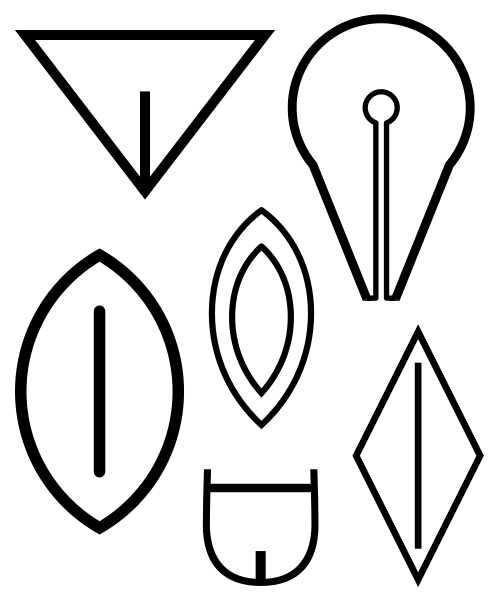Archivo:Vulva symbols.svg
Apariencia

Tamaño de esta previsualización PNG del archivo SVG: 500 × 600 píxeles. Otras resoluciones: 200 × 240 píxeles · 400 × 480 píxeles · 640 × 768 píxeles · 853 × 1024 píxeles · 1707 × 2048 píxeles.
Ver la imagen en su resolución original ((Imagen SVG, nominalmente 500 × 600 pixels, tamaño de archivo: 3 kB))
Historial del archivo
Haz clic sobre una fecha y hora para ver el archivo tal como apareció en ese momento.
| Fecha y hora | Miniatura | Dimensiones | Usuario | Comentario | |
|---|---|---|---|---|---|
| actual | 03:20 24 sep 2022 |  | 500 × 600 (3 kB) | Smasongarrison | slimmed down with svgomg // Editing SVG source code using c:User:Rillke/SVGedit.js |
| 05:51 5 abr 2017 |  | 500 × 600 (4 kB) | AnonMoos | Reverted to version as of 11:32, 2 September 2008 (UTC) | |
| 20:38 15 ene 2017 |  | 938 × 1125 (108 kB) | JMCC1 | error in egyptian symbol | |
| 11:32 2 sep 2008 |  | 500 × 600 (4 kB) | AnonMoos | tweaking most-recently added symbol for exact symmetry | |
| 22:55 30 sep 2007 |  | 500 × 600 (4 kB) | AnonMoos | adding further symbol | |
| 07:13 4 sep 2007 |  | 500 × 600 (3 kB) | AnonMoos | adding symbol | |
| 20:48 26 ago 2007 |  | 500 × 600 (2 kB) | AnonMoos | Four symbolic representations of external female genitals as they have been used in various historical/cultural contexts: 1) Upper left: A schematized drawing of the pubic triangle; among other things, this is the earliest archaic form of the ancient Sum |
Usos del archivo
La siguiente página usa este archivo:
Uso global del archivo
Las wikis siguientes utilizan este archivo:
- Uso en als.wikipedia.org
- Uso en ca.wikipedia.org
- Uso en cs.wikipedia.org
- Uso en de.wikipedia.org
- Uso en en.wikipedia.org
- Uso en en.wikiquote.org
- Uso en fr.wikipedia.org
- Uso en ja.wikipedia.org
- Uso en pl.wikipedia.org
- Uso en ru.wikipedia.org
- Uso en sv.wikipedia.org
- Uso en uk.wikipedia.org
- Uso en uz.wikipedia.org
- Uso en www.wikidata.org
- Uso en zh.wikipedia.org
